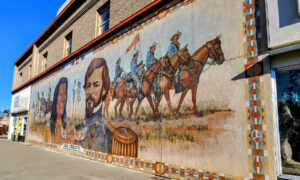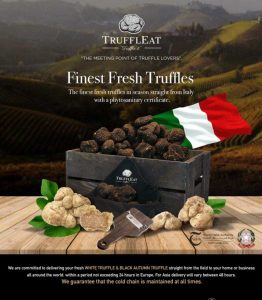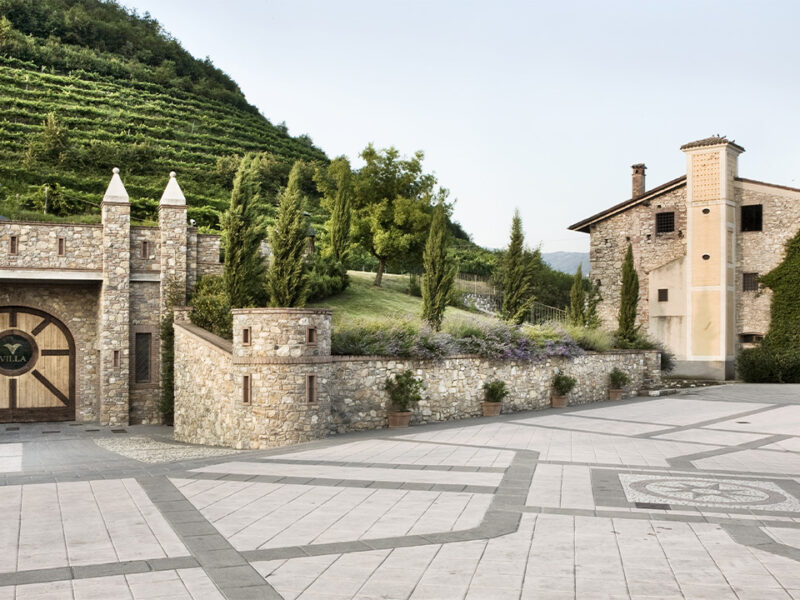It’s said that the first white men to enter the vast region of the Yakima Valley were members of the Lewis and Clark expedition of 1805. But to the Native American tribal peoples who had been hunting, fishing, planting and gathering in the valley for thousands of years, Clark and his party were just tourists. How could they possibly envision a future propelled by the westward migration of settlers, the building of towns, the planting of vast tracts of land, the coming of the railroad, the highway and a lot more tourists?
The Yakima Valley stretches for hundreds of miles east from the slopes of Mount Rainier to the meandering banks of the Columbia River. And while Seattle may attract the lion’s share of Washington’s visitors, a trip to the Yakima Valley is guaranteed to be eye-opening and tastebud-pleasing. It’s a place where people treat you like old friends amid an endless landscape dotted with orchards of pears, peaches, cherries and apples, row upon row of vineyards and rolling fields of hops. It’s a region that is also rich in its cultural history, which can best be appreciated by exploring three museums.
If your visit to the valley is centered in the town of Yakima, begin at the Yakima Valley Museum. You certainly can’t go back any further in time than the museum’s unique standing forest of 15-million-year-old petrified trees. Covering two floors, the museum offers a multitude of exhibits, beginning with a painting that shows how in 1885 the original town of Yakima was literally rolled four miles on logs in order to link up with the newly laid tracks of the Northern Pacific Railroad.
“How many apple crate labels do you think we have in our collection?” Susan Schar Duffin (the museum’s director of development) had me guess.
“Three thousand,” I said, sure I had to be close.
“We have 8,000 labels!”
Divided into eclectic groupings, the museum’s collections delve into a variety of topics, from agriculture to a remarkable collection of carriages and displays devoted to different eras in the region’s domestic and commercial history. There’s also an exemplary collection of Native American costumes, crafts and artifacts that Duffin assured me have (literally) received the blessing of the local tribes.
On June 9 the members of the Yakama Valley Native American tribes will celebrate a key date on the calendar—the day the Yakama Nation Treaty was signed in 1855. This binding agreement with the American government guaranteed hunting and fishing rights for tribal members on the Yakama Reservation as well as the surrounding ancestral land, accounting for 1.3 million acres. Maintained under the watchful eyes of the confederated tribes’ 10,000 enrolled members, it is a document that is displayed with pride at the Yakima Nation Cultural Center in the town of Toppenish.
Just 21 miles south of Yakima on State Highway 97, Toppenish is an ideal day trip. Begin at the Yakima Nation Cultural Center at the corner of State Highway 97 and Buster Road. Its succession of installations offer a vivid picture of life in the days leading up to America’s westward expansion, the impact it had on native peoples and how those people managed to preserve their cultural heritage. The center also has a great gift shop that features creations (particularly beadwork) by local artisans.
Continuing on, you will enter the town of Toppenish with its distinctly Western flavor. The town’s effort to preserve and restore its rich trove of early 20th-century architecture is enhanced by more than 70 outdoor historical murals, including one that celebrates the 1855 treaty.
In Toppenish you will also find the Northern Pacific Railway Museum. Housed in the preserved old depot, the museum showcases the station’s original furniture, memorabilia, train models and artwork of the era designed to attract tourists to the great Northwest. The depot is also home to the museum’s collection of rolling stock, passenger cars and several vintage Northern Pacific steam locomotives, all lovingly looked after by a corps of volunteers.
There is so much to explore in the Yakima Valley, and these museums will go a long way toward helping you understand all that you are seeing.
When You Go
Information for Yakima: www.visityakima.com
Information for Toppenish: www.visittoppenish.com
Yakima Valley Museum: www.yvmuseum.org
Yakima Nation Cultural Center: www.nps.gov/places/yakama-nation-museum.htm
Northern Pacific Railway Museum: www.nprymuseum.org




